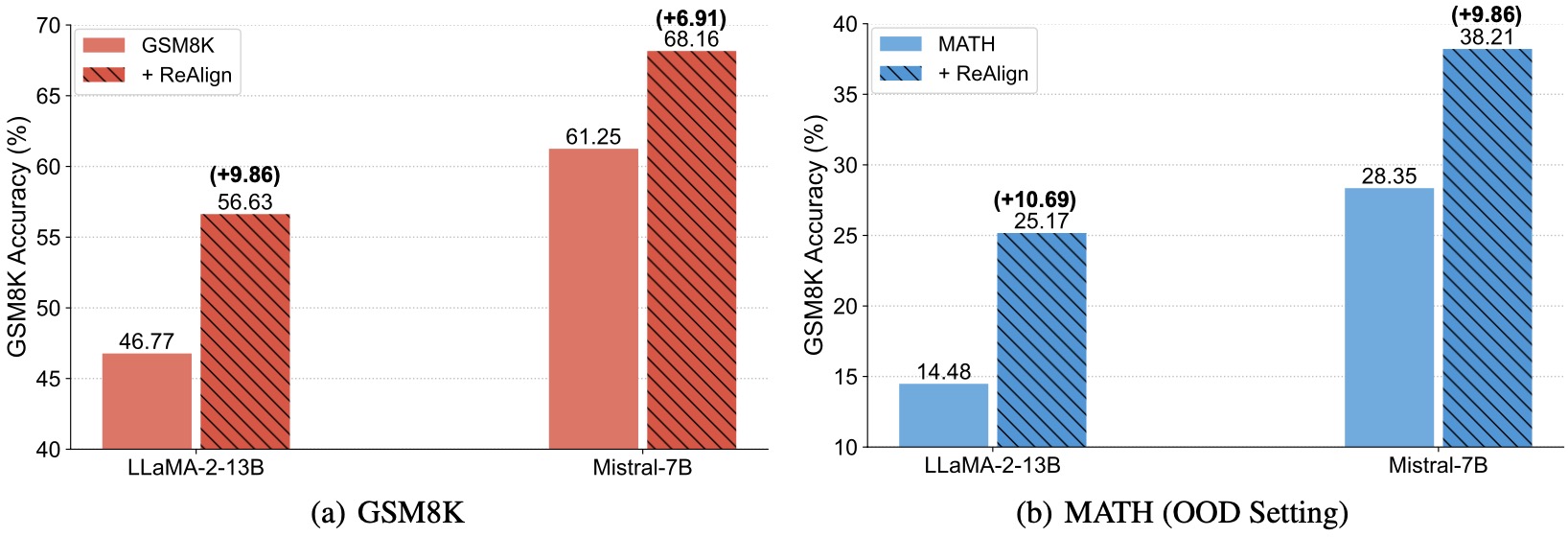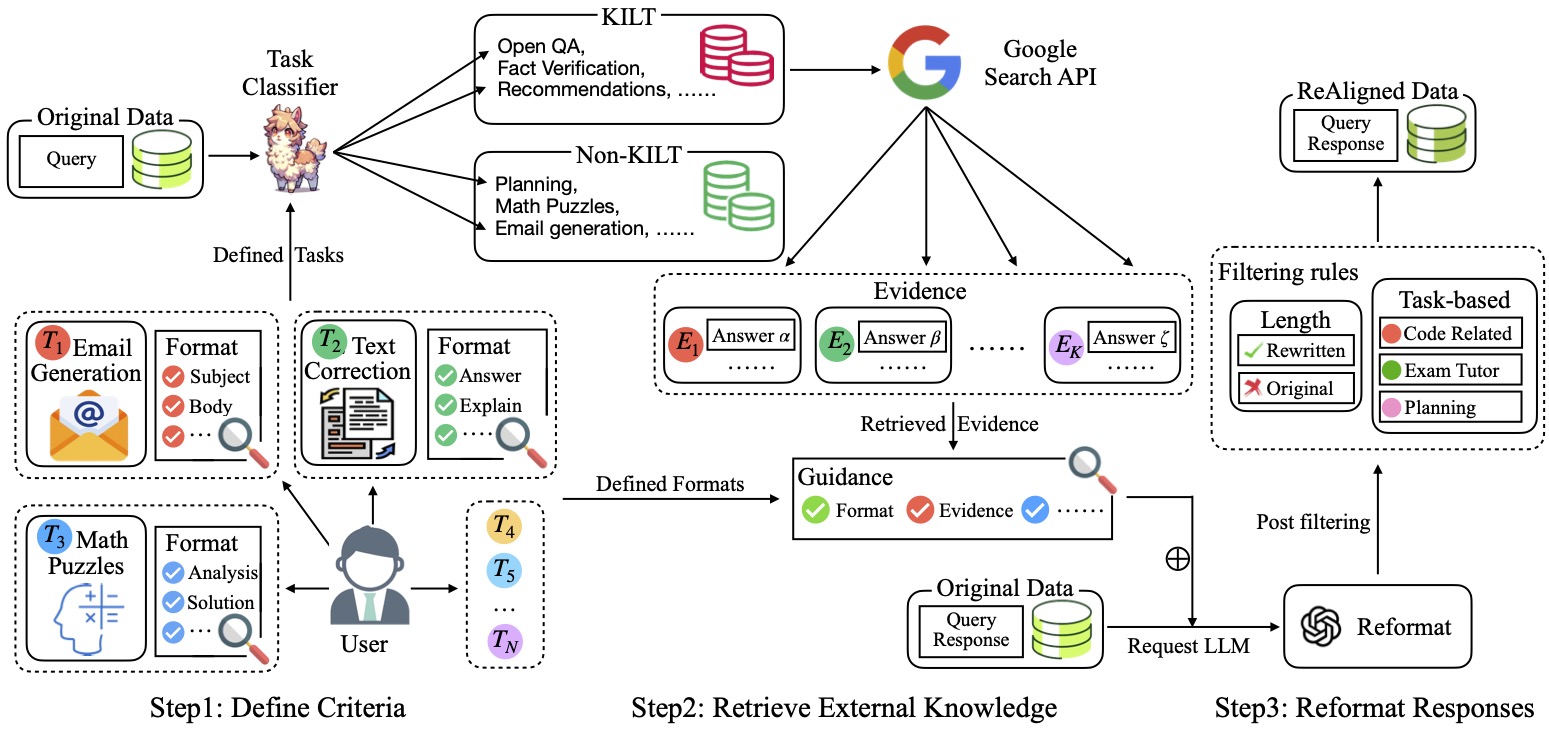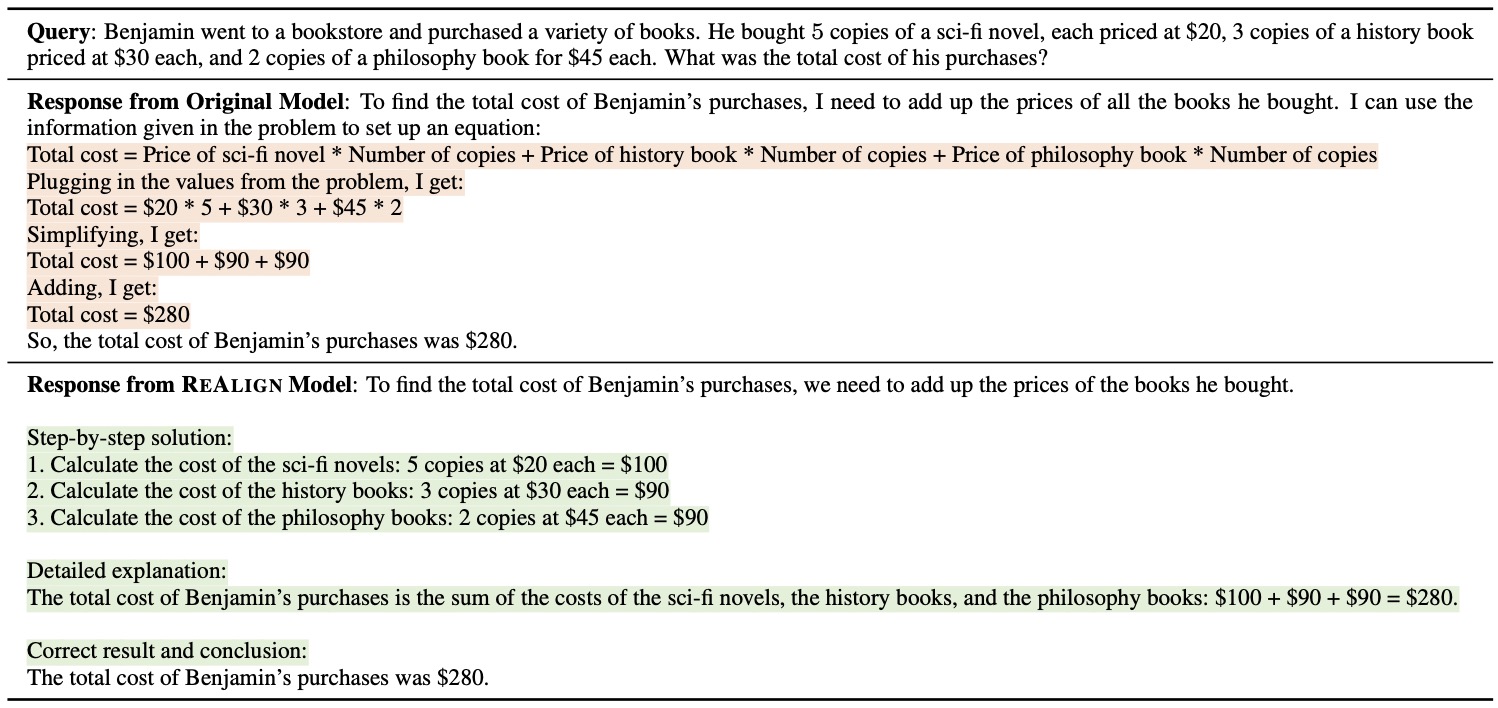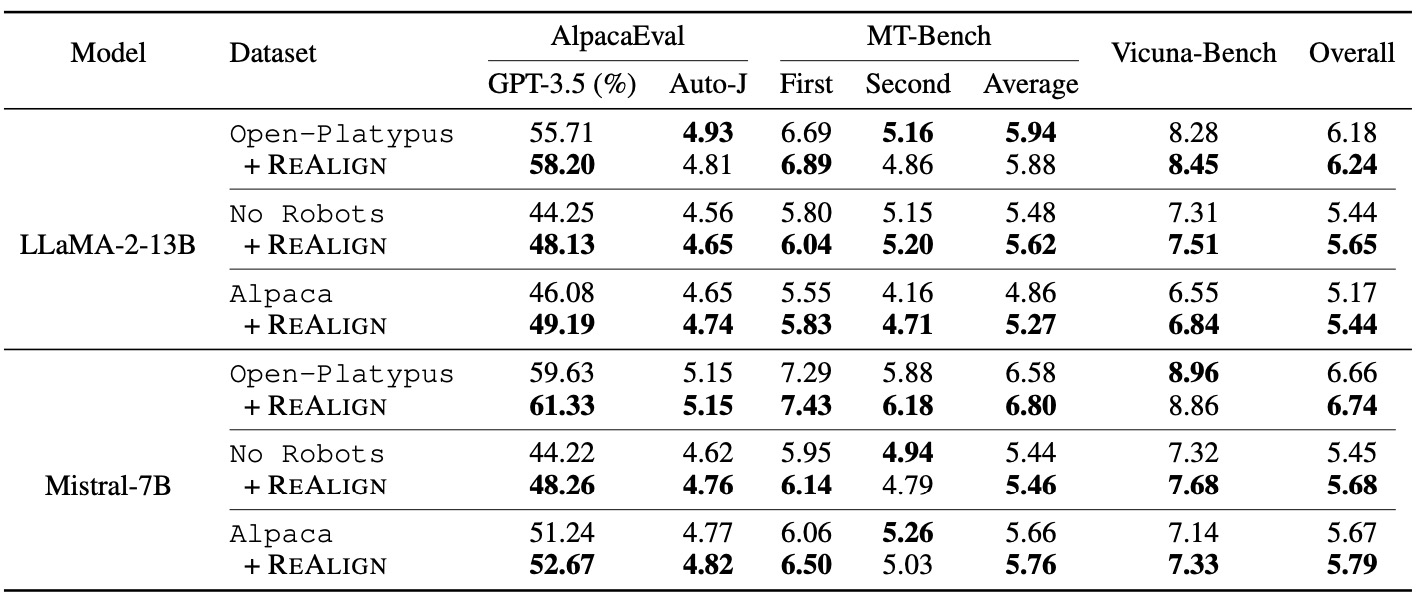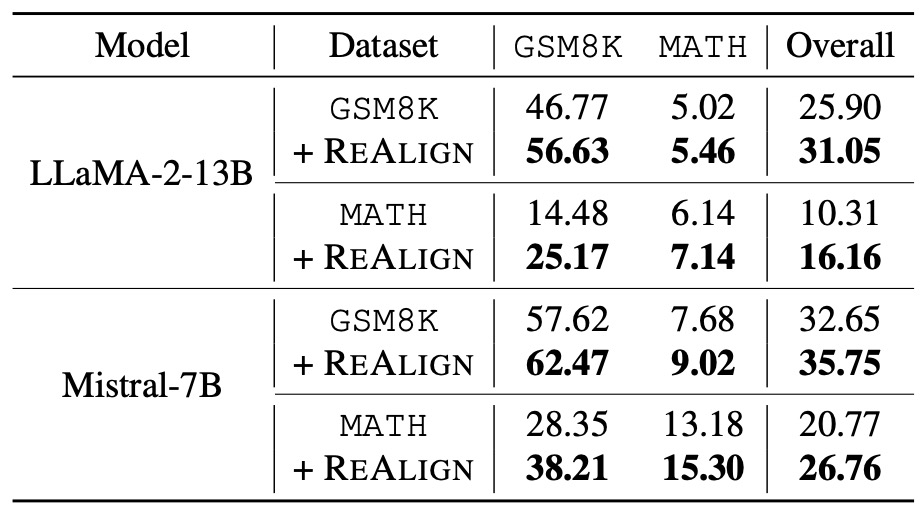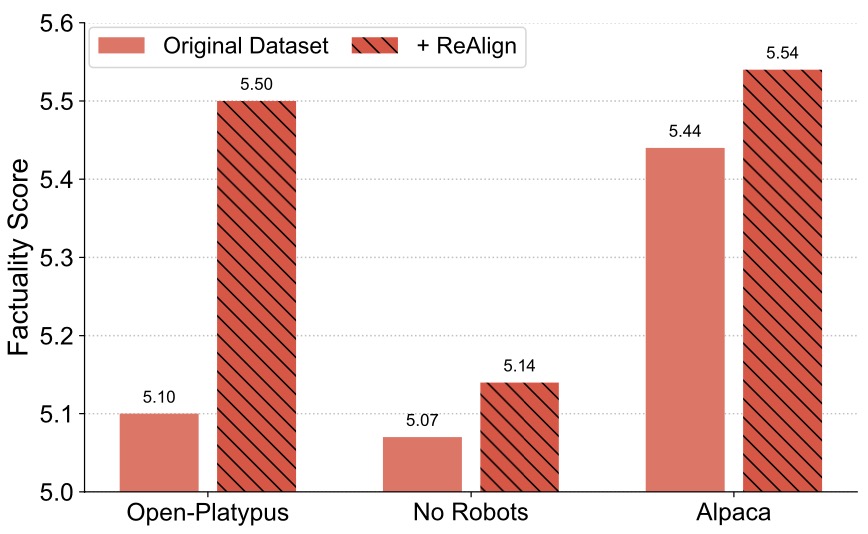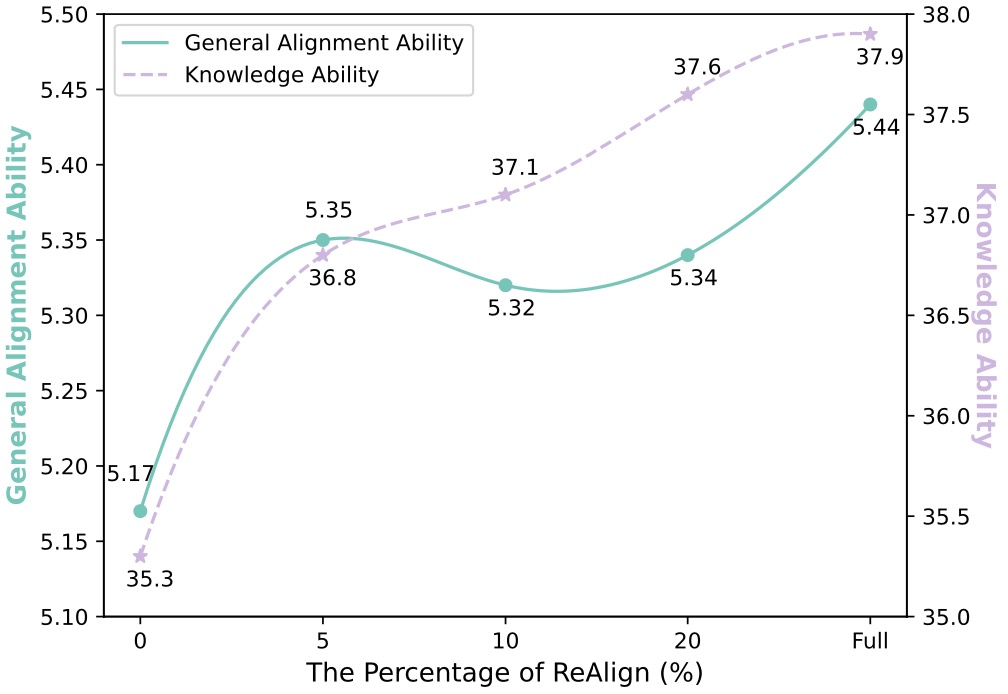Introduction
We explores elevating the quality of existing instruction data to better align with human values, introducing a simple and effective approach named ReAlign (Reformatted Alignment), which reformats the responses of instruction data into a format that better aligns with pre-established criteria and the collated evidence. This approach minimizes human annotation, hallucination, and the difficulty in scaling, remaining orthogonal to existing alignment techniques. Experimentally, ReAlign significantly boosts the general alignment ability, math reasoning, factuality, and readability of the LLMs.
Encouragingly, without introducing any additional data or advanced training techniques, and merely by reformatting the response, LLaMA-2-13B's mathematical reasoning ability on GSM8K can be improved from 46.77% to 56.63% in accuracy. Additionally, a mere 5% of ReAlign data yields a 67% boost in general alignment ability measured by the Alpaca dataset. This work highlights the need for further research into the science and interpretability of LLMs.
The underlying philosophy of ReAlign is to re-coordinate the roles of humans and LLMs in the alignment process, leveraging their complementary strengths -- humans articulate their preferences, and LLMs, in turn, reconstruct instructions based on their generative power (e.g., instruction-following ability), without directly using distilled LLM knowledge. Through this collaborative synergy, we expect the generated instruction data to be not only more contextually precise but also more closely aligned with human preferences.
